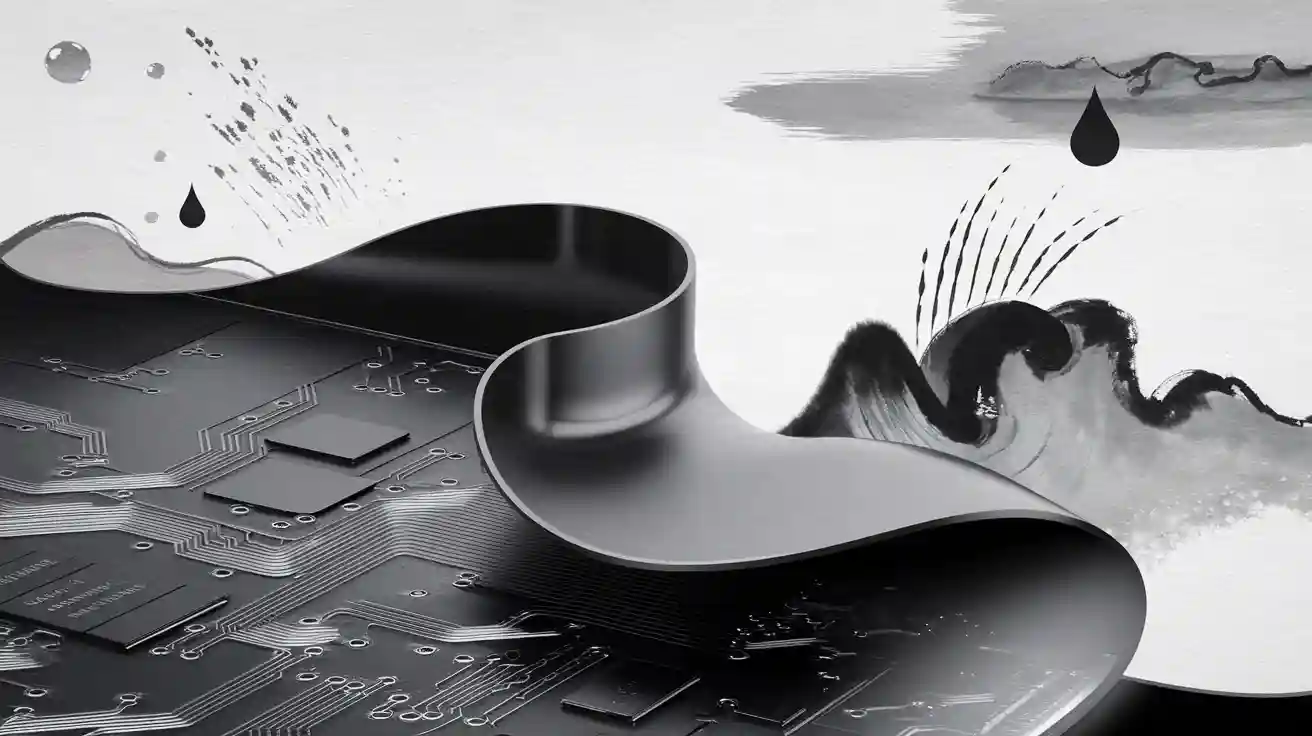Overmolding flex pcb makes a tough shield around important circuits. This process uses overmolding to keep out water, stop chemicals, and block dust. Overmolding flex pcb also adds insulation to stop electrical shorts. Shock-absorbing layers from overmolding protect the pcbs from shaking and damage. These features help the flex pcb last longer and work better in hard places.
Key Takeaways
- Overmolding makes a tough, bendy cover that stops water, dust, and chemicals from hurting flex PCBs. The soft overmolding layer takes in bumps and shakes, so solder joints and connections do not break. Strain relief from overmolding holds wires and connectors in place, so they do not snap when used. Overmolding helps stop scratches and damage, so flex PCBs last longer. Overmolding protects better than other ways, but flex PCBs still stay bendy and easy to put together.
Overmolding Flex PCB Basics
What Is Overmolding?
Overmolding puts a strong cover over a flex PCB. This cover protects the circuits inside. Engineers add another layer on top of the first one. They pick materials like silicone, thermoplastic, or polyurethane. These materials are tough and can bend. Overmolding flex pcb is special because it molds right onto the electronic base. This seals the PCB and keeps out water and chemicals. Advanced overmolding lets people control how thick and shaped the cover is. Makers use custom overmolding to fit special designs. Overmolding works for odd shapes and small spaces. This makes it good for new electronics.
Tip: Overmolding is great for flex PCBs in devices that need more protection from rough places.
Protective Role
Overmolding makes a shield for flex PCBs. The outside layer stops water, dust, and chemicals. It keeps bad things away from the circuits. Overmolding also gives insulation to stop electrical shorts. The soft material takes in shocks and shakes. This keeps solder joints and connections safe from harm. Overmolding flex pcb helps the device last longer by stopping damage. The process adds strain relief so wires do not break at the ends. Abrasion resistance keeps the surface smooth and stops scratches. PCBs in factories, cars, and medical tools get help from these features. Custom overmolding lets engineers pick the best material for each job. Overmolding is still a top way to protect electronics in hard places.
| Protective Feature | Benefit for Flex PCBs |
|---|---|
| Sealing | Blocks water and chemicals |
| Insulation | Stops electrical shorts |
| Shock Absorption | Protects solder joints |
| Strain Relief | Stops wire breakage |
| Abrasion Resistance | Stops surface damage |
Environmental Threats
Moisture and Chemicals
Moisture and chemicals can hurt flex PCBs. Water can get inside and cause rust. Chemicals from cleaners or factory fluids can break down parts. Flex PCBs often work where spills or wet air happen a lot. If there is no shield, water can make short circuits and signals stop working. Chemicals can weaken glue and harm copper lines. Many devices use covers to block water and chemicals, especially outside or in hospitals.
Note: Flex PCBs need more protection in wet or chemical places to stop them from breaking early.
Mechanical Stress
Mechanical stress can damage flex PCBs in many ways. Bending or twisting can make cracks or breaks. Solder joints can break if the board bends too much. Heat from soldering can crack joints fast. Shaking and hits can hurt spots near parts. If hard and soft parts do not match, layers can peel apart. Teams often add stiffeners and use big bend curves to stop damage.
Common sources of mechanical stress:
- Bending again and again near hard-soft joins
- Shaking while working
- Heat shock from soldering
- Parts not matching causing cracks
Temperature Swings
Big changes in temperature put stress on flex PCBs. Fast heat changes make parts grow or shrink at different speeds. This can crack solder joints or split layers. Polyimide handles hot and cold better than other stuff. Lead-free soldering needs more heat, which adds stress. Using parts that grow the same and have high Tg helps stop warping and cracks. Designers add thermal vias to move heat away and test boards with real heat cycles.
| Temperature Challenge | Impact on Flex PCB |
|---|---|
| Mismatched CTE | Cracks, layers peeling |
| High soldering temperatures | Solder joint breaks |
| Poor heat dissipation | Gets too hot, parts break |
Dust and Debris
Dust and debris can land on open flex PCBs. These bits can block paths or make shorts. In factories or outside, dust piles up fast. Debris can scratch or wear down covers. Over time, this causes signal trouble and damage. Devices in tough places need shields to keep out dust and keep circuits safe.
Tip: Cleaning often and using strong covers help flex PCBs fight dust and debris.
Overmolding Protection
Sealing and Insulation
Overmolding puts a strong cover around flex PCBs. This cover keeps water, dust, and chemicals out. Many engineers pick overmolding because it seals really well. The process makes tight seals and gaskets that stop leaks. Overmolding also gives insulation. This insulation stops shorts and keeps signals safe. Delicate parts get both protection and insulation. Devices with overmolding flex pcb can work in wet or dirty places. They do not fail easily. Overmolding helps electronics last longer by keeping the inside dry and safe.
Tip: Overmolding gives flex PCBs a tight seal. This helps them last longer in rough places.
Shock and Vibration Absorption
Overmolding takes in shocks and vibrations that can hurt flex PCBs. Machines, cars, and tools often shake or move. These shakes can break solder joints or loosen connections. Overmolding uses soft, bendy materials to cushion the PCB. This cushion keeps the board safe from hits or shaking. Solder joints stay strong, and the board does not crack. Overmolding helps the PCB last longer by lowering damage from movement. Many industries use overmolding to make their products more reliable.
Overmolding protects against:
- Drops and hits
- Lots of shaking
- Quick jolts
Strain Relief
Strain relief is another big help from overmolding. Wires and connectors bend or pull during use. Overmolding adds support at these weak spots. The material spreads out force so wires do not snap. This support keeps connections safe, even if the device moves a lot. Strain relief makes the whole assembly stronger. Devices with overmolding can bend and pull more without breaking.
Abrasion Resistance
Flex PCBs sometimes rub against other things. This rubbing can wear down the board over time. Overmolding adds a tough layer that stops scratches and scrapes. This layer keeps the PCB smooth and safe. Abrasion resistance is important for devices in factories, cars, or outside. Overmolding helps the PCB last longer by stopping surface damage. Products last longer and need fewer fixes.
| Overmolding Benefit | How It Helps Flex PCBs |
|---|---|
| Sealing & Insulation | Blocks water, dust, chemicals |
| Shock Absorption | Protects from impacts, vibration |
| Strain Relief | Stops wire and joint breakage |
| Abrasion Resistance | Prevents surface wear |
Note: Overmolding gives flex PCBs a strong shield. This shield helps them survive in tough places and keeps them working for a long time.
Overmolding vs Other Methods
Conformal Coating
Conformal coating puts a thin film on flex PCBs. This film protects against water, dust, and some chemicals. It keeps the board light and bendy. Engineers use conformal coating for simple jobs. It works well inside or in safe places. But it does not stop strong hits or shaking. The thin layer cannot block heavy impacts. Some edges and connectors stay open. Overmolding seals better and gives more insulation in tough spots.
Note: Conformal coating is best for easy jobs. It keeps out water and dust but does not protect from hard hits.
Potting
Potting covers the whole flex PCB with thick material. It uses resins like epoxy or silicone. Potting blocks water, dust, shaking, and heat. It gives strong electrical insulation too. Potting can make the board big and stiff. Taking out or fixing potted boards is hard. Overmolding makes a shield that fits well and stays light. Overmolding keeps the board bendy and easy to use. It can also mean fewer extra covers are needed.
| Aspect | Overmolding | Potting |
|---|---|---|
| Product Design | Lets you make flexible shapes | Makes boards bigger, limits design |
| Sealing & Insulation | Great custom barrier | Full cover, strong insulation |
| Shock Absorption | Absorbs shakes and hits | Absorbs shocks but makes board stiff |
| Assembly Efficiency | Fewer steps, parts fit together | More steps, hard to fix |
| Applications | Wearables, connectors, cars, medical | Power modules, sensors, transformers, relays |
Durability Comparison
Overmolding gives good protection and keeps boards bendy. It shields flex PCBs from water, dust, chemicals, and shaking. The custom layer takes in vibration and stops wires from breaking. Potting protects well but makes boards heavy and hard to fix. Conformal coating gives basic protection but does not block impacts. Overmolding helps products last longer in tough places. It lets engineers make lighter and stronger devices.
Overmolding:
- Keeps flex PCBs safe in rough places
- Stays bendy and keeps shape
- Can lower repair costs
Potting:
- Gives strong, stiff protection
- Makes fixing hard
Conformal Coating:
- Good for easy protection
- Easy to use but not very tough
Tip: Overmolding is often the best choice. It gives flex PCBs strength, bendiness, and easy assembly.
Real-World Impact
Industrial Use
Factories use machines that work all day long. These machines shake and move a lot. Flex PCBs inside control panels face dust and oil. They also deal with strong vibrations. Engineers picked overmolding for a robotic arm project. The overmolded flex PCBs stayed safe from oil spills. They also stayed safe from dust. The shock-absorbing layer stopped wires from breaking. This happened during fast movements. Because of this, there were fewer repairs. Machines had less downtime. The team saw their machines lasted longer.
In many factories, overmolding helps flex PCBs last longer, even in rough conditions.
Consumer Devices
Many people wear smartwatches and fitness trackers every day. These devices get wet from sweat or rain. Sometimes they fall on the ground. Designers used overmolding to seal the flex PCBs inside. The tight seal kept out water and dust. The soft cover protected the board from drops and bumps. Users saw their devices worked well for a long time. Overmolding made these products more reliable for daily use.
Overmolding in consumer devices:
- Keeps water out during workouts
- Stops dust from causing problems
- Protects against drops
Automotive and Medical
Cars and medical tools need strong and safe electronics. Flex PCBs in cars face heat, shaking, and dirt. Overmolding shields these boards from engine oil and road dust. In one case, a car sensor with overmolded flex PCB worked well after years of use. Medical devices must stay clean and work in hospitals. Overmolding gave these devices a smooth, sealed surface. This made cleaning easy and kept germs away. Both industries trust overmolding for better durability and safety.
Overmolding helps flex PCBs survive in cars and hospitals where failure is not an option.
- Overmolding keeps water, dust, and chemicals away from flex PCBs.
- The soft layer from overmolding helps protect solder joints and connections from damage.
- Strain relief makes wires and connectors less likely to break.
- Abrasion resistance helps devices work longer without wearing out.
Overmolding gives flex PCBs a strong shield in tough places. Engineers notice their products last longer and work better. They should use overmolding when they need more protection and strength.










 2025-08-12
2025-08-12
 BEST
BEST


.png)
.png)
.png)
.png)

.png)

